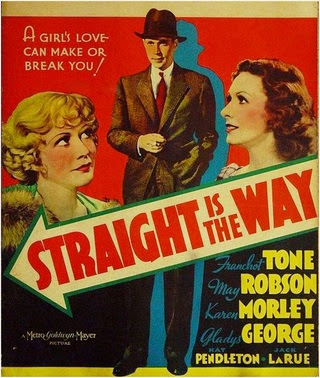One-stop shopping for circa 1931 state-of-the-art airborne Special Effects*, from real daredevils tempting death in the sky to first-rate/well-integrated backscreen projection trickery to truly wild model work, easy to spot, but impossible to sneer at. (You wonder how much period audiences believed and how much they just ‘went along’ with.) All in the service of a superior military yarn from Frank ‘Spig’ Wead*, his usual story about a couple of frenemies, one upstanding/one a fuck-up, with a big sacrifice at the end to make up for all the bad behavior. Here, Wallace Beery, aging Navy aircrewman, set in his ways, but able to fix a plane with a Swiss Army Knife and a bundle of balsa wood meets his match in fast-rising Clark Gable with his newfangled ways of modern science & efficiency. (Gable just as fast-rising at the studio in his breakthru year, jumping from sixth to second billing after SECRET SIX, also with Beery & director George W. Hill, among 13 films in ‘31. Pre-stash, BTW.) To the film’s credit, they don’t downplay Beery’s mean spirited ways, he’s a louse, and lucky to have Hill in charge, one of the few M-G-M directors at the time with real action chops.
SCREWY THOUGHT OF THE DAY: *How M-G-M dropped the ball in so many tech departments over the decades (other than sound where slightly deaf Douglas Shearer - brother to Norma/brother-in-law to Irving Thalberg - kept their lead) has never been explained.
ATTENTION MUST BE PAID: Real footage of planes landing on an aircraft-carrier deck looks insanely dangerous.
DOUBLE-BILL/LINK *Another plug for one of John Ford’s least seen major efforts, his ‘Spig’ Wead bio-pic, WINGS OF EAGLES/’57; a unique film from any standpoint, half boisterous flyboy Air Force drama/half blistering Scenes From A Marriage reportage. https://maksquibs.blogspot.com/2008/06/wings-of-eagles-1957.html



































